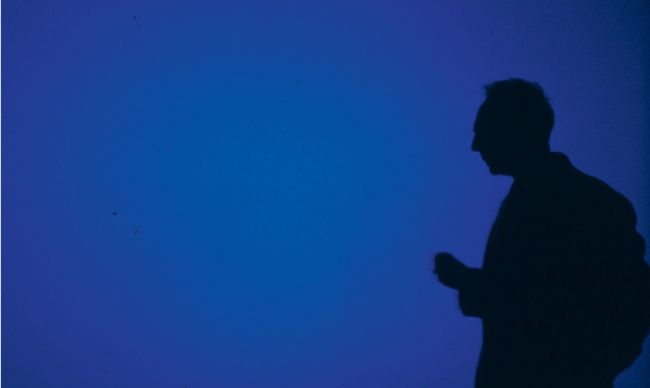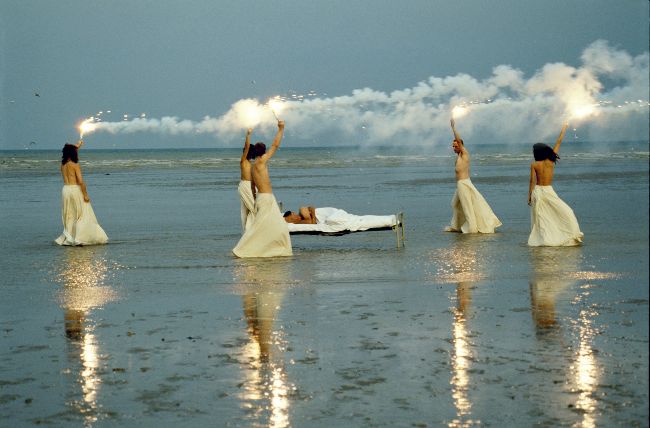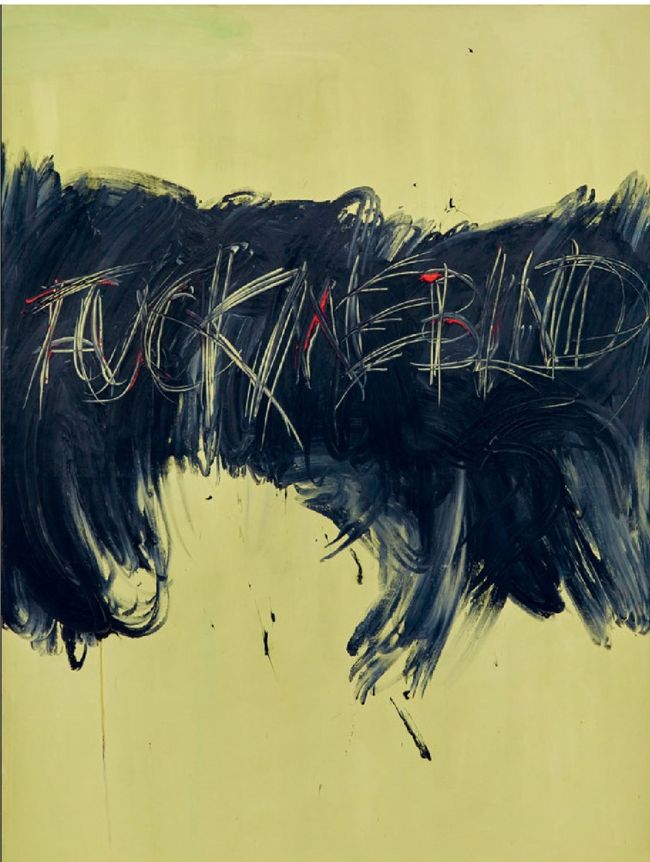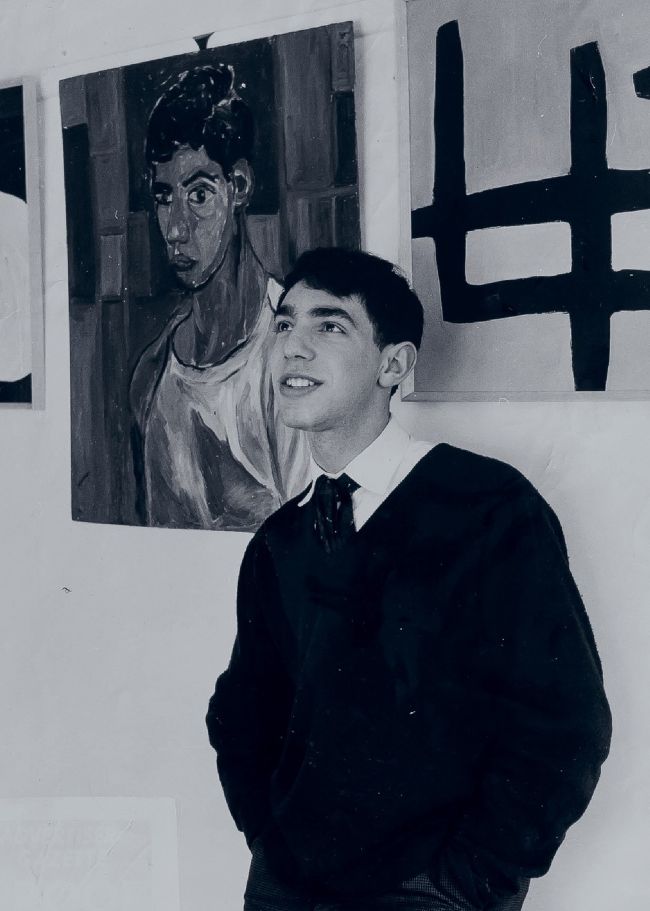PROTEST
Experiencing the genius of Derek Jarman at an exhibition in IMMA, Tonie Walsh gives us the background on, and the impact of, an unmatchable artist. All images by Derek Jarman.
At a dinner in the company of international critical expertise and many lenders who’ve added immeasurably to the scope and authority of the retrospective, IMMA’s director, Annie Fletcher, toasted - with great poignancy - the genius and humanity of Jarman, who died of AIDS-complications in February 1994. He would be 77, if still alive today, undoubtedly getting under the skin of polite English society while extemporising on the state of the queer nation.


Marking the 25th anniversary of Derek Jarman’s death, it was appropriate that the Irish Museum of Modern Art (IMMA) brought in the big guns for a preview of Protest! last month that extended into a day-long seminar remembering one of Britain’s most extraordinary artists and queer activists. Joining IMMA curator, Seán Kissane, were historians Robert Mills, Dr Catherine Silverstone and Elisabeth Lebovici; writers Charlie Porter, Jon Savage, Annie Fletcher and Karim White; Jarman friend and longtime political colleague, Peter Tatchell; composer Donna McKevitt, and Sandy Powell, whose early costume designs graced several of Jarman’s feature films.

Film director, stage designer, diarist, author, artist, activist and gardener, Derek Jarman displayed a heightened sense of purpose and urgency to everything he touched. The man was a model of intersectionality long before the term gained currency. Graduating in 1967 from the Slade School of Fine Art at London’s University College, he was well placed to exploit and critique the transformation of British society throughout the 1970's and beyond, and a witness to the (partial) decriminalisation of male homosexuality in 1969. In later years, he offered an excoriating and necessary corrective to the culturally entrenched homophobia of Margaret Thatcher’s reign and the war years of the AIDS pandemic.
While Jarman is known more for his film work, that ranged from experimental Super 8mm to provocative and unapologetically queer full-length features, curator Seán Kissane has gone out on a limb to catalogue and celebrate the rich multi-disciplinary output of a man who never seemed to stand still, whose embrace of pop and youth culture (really starting with the punk film Jubilee) came laden with some extraordinarily prescient criticism and anger at mainstream society’s legacy of oppression and marginalisation of its sub-groups.
“So many people don’t know Derek Jarman the painter, but that was his primary practice”, says Kissane, who devoted three years to tracking down much previously unseen work (of which 80 feature in this show) along with sketchbooks, photographs and scripts that confirm the evergreen radical quality of this uber-political agent provocateur.

Approaching the show, the self-portrait of a precocious 17 year-old invites you down the rabbit hole while a myriad of voices waft from a projection of Blue (1993), Jarman’s elegiac goodbye film. Looming over the first corridor is a gigantic black and white photo of Derek clutching a dildo. Question and statement. Light and dark. It’s everywhere, in some rooms more literally so, like the “black paintings” that Jarman worked on after his HIV diagnosis in 1986. Two years later, Margaret Thatcher’s Tory government would introduce section 28 of the Local Government Act, outlawing the “promotion of homosexuality”, at a stroke shutting down any discussion or evocation of lesbian and gay life and culture in the UK’s educational system and withdrawing funding from countless LGBT+ organisations.
Stigma, states of exclusion and the place of memory loom large in much of Jarman’s later work. His enormous ‘protest’ paintings, executed while his sight was beginning to decline, stand testament to the shrill posturing and lack of empathy on display by British red top newspapers and an uncaring government during the worst of the AIDS pandemic.
More intimate work (of scale and process) documents Jarman’s latter days at Prospect Cottage - the fisherman’s hut he renovated in the shadow of Dungeness nuclear power station in Kent. Taking a cue from the tar-based weatherproofing of the cottage, these votive pieces riff on everything from Jarman’s pathology of AIDS pharma to multi-layered quips on family and social history, religious iconography, sexuality and transgression.
Several volumes of his poetry and journals, along with some memorable pop videos he directed for the Pet Shop Boys and others, punctuate the galleries of paintings.
It’s an extradorinaiy show, full of a distinct queer iconography and political agency that remains contemporary after a quarter of a century. If you haven’t grown up with Derek Jarman, I can say this quite emphatically: there has been no-one quite like him.
Fittingly, satellite exhibitions are being staged at the IFI, where all of Jarman’s film output is being screened, and at VOID, Derry. That latter exhibition, entitled 'The Last of England', seems utterly apposite amidst the Brexit turmoil and is a cheeky two-fingers given its Northern Ireland setting. A live musical performance of Blue is due to take place at the National Concert Hall and in Manchester.
After IMMA, the exhibition travels to the Manchester Art Gallery in 2020, where cultural historian, Jon Savage, will deconstruct the collection anew. A fully-illustrated catalogue, designed by Niall Sweeney (Pony Ltd), is due next February. With wide-ranging contributions, it’ll undoubtedly provide a timely critical reassessment and celebration of one of the last century’s great artists.
Overheard on the opening night, a couple of English voices saying: “This should be in the Tate”.
My response: Thank you IMMA for pulling out all the stops and gifting us something so revelatory and deeply affecting.
Derek Jarman PROTEST! runs at IMMA until Feb 23, 2020.